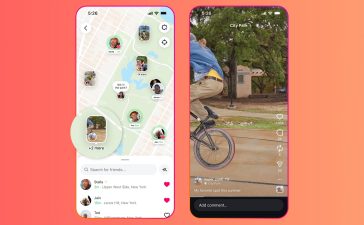Django is a solid foundation for creating web applications. It is not enough to rely on Django’s security features. You must take additional steps to strengthen the security of your application.
You can protect your application against cyber-threats by implementing additional security measures. It is important to protect your users’ data and maintain the reputation of your organization.
Decorators can help you to secure views
Django views handle incoming requests. They are crucial in determining what response is given to the client. Views can be secured to control access and protect sensitive functionality. Django provides decorators you can use to enforce security measures.
@login_required decorator
The @login_required decoration ensures that only authenticated user can access a specific view. The application redirects unauthenticated users to the login page when they attempt to access a view.
from django.contrib.auth.decorators import login_required
from django.http import HttpResponse
@login_required
def secure_view(request):
# Your view logic here
return HttpResponse("This is a secure view") The secure_view function is automatically authenticated by applying the @login_required decoration.
Custom Decorators
Django allows you to create custom decorators. You can implement extra security checks and restrictions. You might, for example, want to create a decorator which restricts the access of specific user roles.
from functools import wraps
from django.http import HttpResponse
def admin_only(view_func):
@wraps(view_func)
def wrapper(request, *args, **kwargs):
if request.user.is_superuser:
return view_func(request, *args, **kwargs)
else:
return HttpResponse("Access Denied")
return wrapperThe admin_only décorator checks if the user who is accessing the view has superuser status. The view function is run if they are superusers, otherwise the user’s access is denied.
User Authentication & Authorization
Security of Django applications is dependent on user authentication and authorization. They make sure that only the correct person can access certain functionalities in the application.
User Authentication
The user authentication process verifies that the person who is accessing your application is the rightful owner. Django has a built-in authentication system that can handle this.
from django.contrib.auth import authenticate, login
from django.http import HttpResponse
def login_view(request):
if request.method == 'POST':
username = request.POST['username']
password = request.POST['password']
user = authenticate(request, username=username, password=password)
if user is not None:
login(request, user)
return HttpResponse("Login successful")
else:
return HttpResponse("Invalid credentials")
else:
# Render login form
return HttpResponse("Login form")The log_view functions handles the login process. The authenticate function checks the credentials submitted by a user. The login function creates an account for the user if the credentials are valid. This allows them to access the restricted areas of the app. If the credentials are incorrect, the code will not create a new session.
Authorization of Users
The user authorization controls what actions an application’s users can take. Django’s permission system is flexible and gives you full control over the user’s access.
from django.contrib.auth.decorators import permission_required
from django.http import HttpResponse
@permission_required('polls.can_vote')
def vote(request):
# Voting logic here
return HttpResponse("Vote recorded")In the example above, the @permission_required decoration ensures that only those users who have the polls.can_vote access can view the vote. Users who attempt to access the view without the required permission are denied access.
Custom Middleware
Middleware is the software that sits in between the web server, the browser and the middleware. Custom middleware can be used to add additional security checks, or modify requests and responses. It could be to enforce HTTPS.
from django.http import HttpResponsePermanentRedirect
class EnforceHttpsMiddleware:
def __init__(self, get_response):
self.get_response = get_response
def __call__(self, request):
if not request.is_secure():
url = request.build_absolute_uri(request.get_full_path())
secure_url = url.replace('http://', 'https://')
return HttpResponsePermanentRedirect(secure_url)
return self.get_response(request)If not, it redirects to the HTTPS version of the URL. It redirects the URL to the HTTPS variant if it is not.
Securing File Handling
Web applications often include file handling. If not secured properly, it can pose security risks. Validating the contents of user-uploaded documents is important when handling them. This will prevent malicious uploads. You can validate the file types using Django’s FileExtensionValidator.
from django.core.validators import FileExtensionValidator
from django.forms import forms
class FileUploadForm(forms.Form):
file = forms.FileField(validators=[FileExtensionValidator(allowed_extensions=['pdf', 'docx'])])In the above code block, the FileUploadForm class uses the FileExtensionValidator to allow only PDF and DOCX file uploads. Any other file format will be rejected by the application during upload. You can customize the extensions allowed to meet your application’s needs.
CSRF Protection
Django has built-in protection against Cross-Site Request Forgery attacks. In your template, you should include a token for CSRF validation.
<form method="post" action="/submit-form/">
{% csrf_token %}
<!-- Form fields -->
<button type="submit">Submit</button>
</form>Django creates a hidden field with the CSRF token when you use the % csrf_token % tag. This token is unique for each session. This token helps to validate the authenticity submitted form.
When processing form submission, the server checks for the CSRF token. Django will raise an HTTP 403 error if the token is invalid or missing. This type of vulnerability is a serious security risk and your application must be protected.
Write Secure Forms
It’s crucial to secure user input when creating forms. To prevent common vulnerabilities such as SQL injection and XSS, it is important to handle user input securely. Here is an example of how to create a Django secure
from django import forms
from django.utils.html import escape
class SecureForm(forms.Form):
name = forms.CharField(max_length=100)
email = forms.EmailField()
def clean_name(self):
name = self.cleaned_data['name']
# Sanitize user input
sanitized_name = escape(name)
return sanitized_name
def clean_email(self):
email = self.cleaned_data['email']
# Validate and sanitize user input
if not email.endswith('@example.com'):
raise forms.ValidationError("Invalid email domain")
sanitized_email = escape(email)
return sanitized_emailclean_name, and sanitize_email validate and sanitize user input. The clean_name uses the Escape function in order to sanitize and prevent potential XSS attack.
The clean_email validates email format, and limits the email domain to . If the email doesn’t meet the criteria, it raises ValidationError. This action increases the security of forms and protects against common vulnerabilities.
Understanding Web Application Vulnerabilities Is Important
Understanding web application vulnerabilities can help you secure the application. This will help you to identify and fix any weak spots in your application. This will reduce the chances of an attack being successful.






